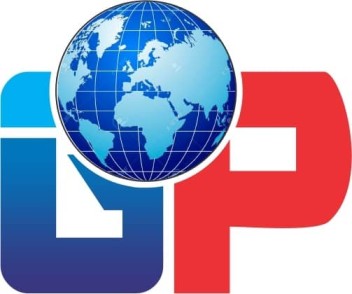Asset integrity and asset integrity management are very important in the oil and gas industry. In the complex and high-stakes world of oil and gas operations, the purpose is to ensure safety, efficiency, and of course, profitability.
They help ensure that equipment, tools, and structures are safe, reliable, and function as they should. The oil and gas industry is known for its complexity and risks. To prevent accidents, reduce downtime, and save costs, maintaining asset integrity is important.
In simple terms, asset integrity is about keeping equipment and systems in good condition for as long as possible. Asset integrity management, on the other hand, is the process of making sure that this happens through careful planning, regular inspections, and maintenance.
By understanding these concepts, companies in the oil and gas sector can prevent failures that could harm people, the environment, and business operations.
This blog will explain what asset integrity is, why it matters, and how asset integrity management works to keep the industry running safely and efficiently.
We’ll explore key concepts, industry terms, and the importance of maintaining asset integrity throughout the lifecycle of oil and gas facilities.
Table of Contents

What is Asset Integrity?
Asset integrity refers to the ability of an asset to perform its required function effectively and efficiently while protecting health, safety, and the environment. In the oil and gas industry, assets can include a wide range of equipment and facilities, such as:
- Offshore platforms
- Pipelines
- Storage tanks
- Processing facilities
- Drilling rigs
- Subsea equipment
The concept of asset integrity encompasses three main elements:
- Structural Integrity: This relates to the physical soundness of an asset, ensuring it can withstand the loads and stresses it’s subjected to during operation.
- Containment Integrity: This refers to the ability of an asset to contain hydrocarbons and other potentially hazardous materials, preventing leaks or spills.
- Operational Integrity: This involves maintaining the asset in a way that ensures it operates as intended, meeting performance requirements and safety standards.
Asset integrity is not just about maintaining physical assets; it’s about preserving the entire system’s ability to operate safely and efficiently.
This includes considering factors such as design, operation, maintenance, and management processes.
What is Asset Integrity Management?
Asset Integrity Management (AIM) is a systematic approach to ensuring that assets are designed, operated, and maintained in a way that preserves their integrity throughout their lifecycle.
It’s a holistic strategy that combines engineering, operations, and maintenance practices to optimize asset performance while minimizing risks to safety, health, and the environment.
Asset Integrity Management (AIM) in the oil and gas industry is a method to ensure that equipment, facilities, and infrastructure work safely, reliably, and efficiently throughout their life.
It combines strategies, processes, and technologies to assess, monitor, and maintain the strength and operation of assets like pipelines, platforms, refineries, and processing plants.
AIM includes activities like risk assessment, inspections, maintenance planning, corrosion control, and performance tracking. The main goals are to prevent failures, reduce downtime, extend asset life, meet regulations, and keep costs low while ensuring safety and environmental protection.
Key Components of Asset Integrity Management:
- Risk Assessment and Management:
This involves identifying potential hazards and assessing the risks associated with asset failure. Risk assessment techniques such as HAZOP (Hazard and Operability Study) and FMEA (Failure Mode and Effects Analysis) are commonly used in the oil and gas industry. - Inspection and Monitoring:
Regular inspections and continuous monitoring are crucial for detecting potential issues before they escalate. This can include non-destructive testing (NDT), corrosion monitoring, and real-time sensor data analysis. - Maintenance Strategies:
Implementing effective maintenance strategies is key to preserving asset integrity. This can include preventive maintenance (scheduled based on time or usage), predictive maintenance (based on condition monitoring), and risk-based maintenance (prioritizing maintenance activities based on risk assessment). - Data Management and Analysis:
Collecting, storing, and analyzing data from various sources (inspections, maintenance records, operational data) is essential for making informed decisions about asset integrity. - Performance Standards and Key Performance Indicators (KPIs):
Establishing clear performance standards and KPIs helps in measuring and improving asset integrity management efforts. - Management of Change:
Implementing processes to manage changes in equipment, procedures, or personnel ensures that modifications don’t compromise asset integrity. - Competency Management:
Ensuring that personnel involved in asset integrity management have the necessary skills and knowledge is crucial for effective implementation.

Asset Integrity Management in the Oil and Gas Servicing Industry:
The oil and gas servicing industry plays a vital role in maintaining asset integrity for oil and gas operators.
Service companies provide specialized expertise, equipment, and personnel to support various aspects of asset integrity management.
Let’s explore some key areas:
1. Well Integrity:
Well integrity refers to maintaining control of fluids within a well at all times. Service companies provide well integrity services such as:
- Casing and tubing inspection
- Cement evaluation
- Wellhead maintenance
- Well barrier testing
2. Corrosion Management:
Corrosion is a significant threat to asset integrity in the oil and gas industry. Service companies offer corrosion management solutions including:
- Corrosion inhibitor treatments
- Cathodic protection systems
- Corrosion resistant alloy (CRA) selection and application
- Corrosion monitoring and inspection services
3. Pipeline Integrity:
Maintaining pipeline integrity is crucial for safe and efficient hydrocarbon transportation.
Service companies provide:
- In-line inspection (ILI) using “smart pigs” (Pipeline Inspection Gauges)
- Pipeline repair and rehabilitation services
- Leak detection systems
- Geohazard assessment and mitigation
4. Subsea Integrity:
For offshore operations, maintaining the integrity of subsea assets is particularly challenging.
Service companies offer:
- Subsea inspection, maintenance, and repair (IMR) services
- Remotely Operated Vehicle (ROV) operations
- Subsea asset monitoring systems
- Riser integrity management
5. Non-Destructive Testing (NDT):
NDT plays a crucial role in asset integrity management. Service companies provide various NDT techniques such as:
- Ultrasonic Testing (UT)
- Radiographic Testing (RT)
- Magnetic Particle Inspection (MPI)
- Eddy Current Testing (ECT)
6. Data Management and Analytics:
Service companies often provide software solutions and expertise for managing and analyzing asset integrity data, including:
- Asset integrity management software
- Risk-based inspection (RBI) software
- Predictive maintenance analytics
- Digital twin technology for asset modeling and simulation
Checkout our list of oil and gas services and let’s work together.
Importance of Asset Integrity Management:
Effective asset integrity management is crucial for several reasons:
- Safety: Preserving asset integrity helps prevent accidents, protecting workers, the public, and the environment from potential harm.
- Regulatory Compliance: Many countries have strict regulations governing asset integrity in the oil and gas industry. Proper AIM helps ensure compliance with these regulations.
- Operational Efficiency: Well-maintained assets operate more efficiently, reducing downtime and increasing productivity.
- Cost Reduction: While implementing a comprehensive AIM program requires investment, it can lead to significant cost savings by preventing costly failures and extending asset life.
- Environmental Protection: Maintaining asset integrity helps prevent spills and leaks that could harm the environment.
- Reputation Management: Major asset failures can severely damage a company’s reputation. Effective AIM helps maintain stakeholder confidence.
Challenges in Asset Integrity Management:
Implementing and maintaining an effective asset integrity management program comes with several challenges:
- Aging Infrastructure: Many oil and gas assets are operating beyond their original design life, requiring enhanced monitoring and maintenance.
- Harsh Environments: Oil and gas operations often occur in challenging environments (e.g., offshore, arctic) that accelerate asset degradation.
- Complex Systems: Modern oil and gas facilities are highly complex, making it challenging to assess and manage all potential risks.
- Data Management: Collecting, storing, and analyzing vast amounts of integrity data can be overwhelming without proper systems and processes.
- Skill Shortages: The industry often faces shortages of skilled personnel with expertise in asset integrity management.
- Balancing Costs and Risks: Companies must balance the costs of integrity management activities against the potential risks of asset failure.

Future Trends in Asset Integrity Management:
The field of asset integrity management is continuously evolving. Some emerging trends include:
- Digitalization: Increased use of digital technologies such as IoT sensors, big data analytics, and artificial intelligence to enhance asset monitoring and predictive maintenance.
- Risk-Based Approaches: Greater adoption of risk-based methodologies to prioritize integrity management activities and optimize resource allocation.
- Remote Monitoring: Enhanced capabilities for remote monitoring and inspection, reducing the need for personnel to be physically present at high-risk locations.
- Sustainability: Growing focus on integrating sustainability considerations into asset integrity management practices.
- Standardization: Efforts to develop and adopt industry-wide standards for asset integrity management to improve consistency and best practices.
Conclusion
In the blog post, we discuss what asset integrity management is, especially in the oil and gas space.
Asset integrity is key in the oil and gas industry, helping keep operations safe, efficient, and sustainable. Good asset integrity management protects your assets, workers, and the environment while improving performance and meeting regulations.
This involves regular checks, maintenance, and careful planning. Keeping equipment in good shape reduces accident risks, cuts downtime, and protects both workers and the environment.
This approach not only boosts efficiency but also helps meet strict safety rules and stay competitive.
As the industry changes, using new technologies and methods is important for managing asset integrity.
Staying updated and working with experts helps ensure your assets last long and supports the industry’s sustainable growth.


Recent Comments